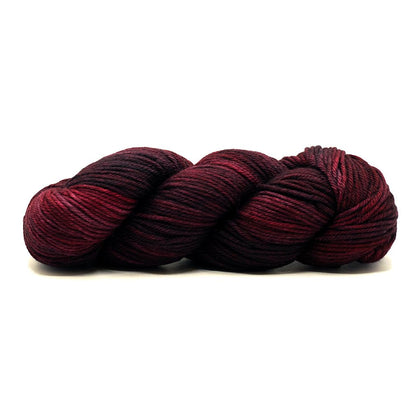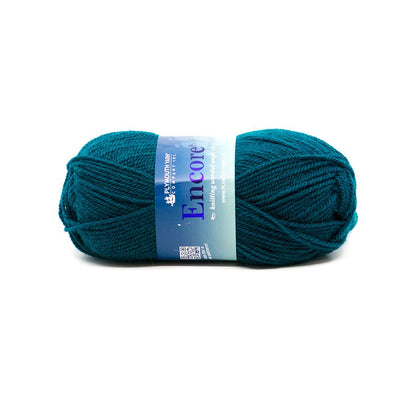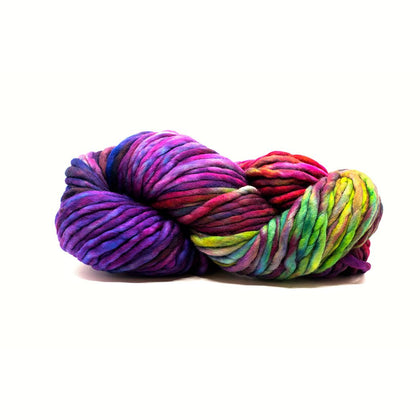A Beginner's Guide to Swatching

Swatching. Probably one of the most important and dreaded tasks in the yarn crafting world. Whether you are someone who always swatches or someone who knows they should but may not always do it...understanding the information swatches provide is a valuable skill.
We’ve gone through a general overview of swatching below. Most designers will provide information on the type of swatch that will be most beneficial for their patterns, however, so make sure to check their suggestions to ensure you’re getting the most accurate information for your particular project!
Definition
At its most basic level, swatching means creating a small sample of fabric with the particular combination of fiber and tool you intend to use for a project. This fabric will then be measured to determine your gauge. Most gauges are provided based on the number of stitches and rows needed to make 4 inches. (For a more in-depth look at gauge, check out this article!) Typically, the swatch will be done in stockinette for knitters and the primary stitch pattern for crochet.
Creation
There are many different ways to create a gauge swatch, but we recommend creating a piece of fabric that is at least 5 inches wide by 5 inches tall with a border that won’t curl. (This is primarily a problem for knitters, and a garter or seed stitch border of approximately 3 rows on top/bottom and 2 or 3 stitches at either side will really help!) This method provides a 4 inch by 4 inch area for measurement that doesn’t include distorted stitches at any edge. A quick way to estimate the number of stitches needed for your swatch is to take the number of stitches the pattern gauge has in 4 inches and add at least 25% more.

The swatch in the photo above uses a garter stitch border to keep the edges from rolling and has been lightly blocked to relax the stitches.
In the Round
Creating a swatch for a project that will be done in the round is a little different than the process described above. To achieve a flat fabric that mimics the process of circular stitching, you’ll work across the row and instead of turning your work, you’ll make a long float with the working yarn at the back of the fabric to start stitching at the same end once again. Knitters, this means you’ll need to work the swatch on double pointed or circular needles. Once you have enough rows, you’ll bind off (loosely!) and cut the floats at the back of the work.

In the image above, you can see that the far left and right stitches are uneven and loose. When measuring for gauge, these stitches will not be used.
The reason you want to go through this extra step is because the tension we use when working flat is different than when we work in the round. A perfect example is knitting stockinette stitch. When working flat, every other row is purled. When working in the round, every row is knit. The tension on knit stitches is not going to be the same as purl stitches, and we want to accurately measure the gauge for how the project is going to be worked.
Completion
There is no hard and fast rule as to whether you should block a swatch or not. Some patterns will indicate whether their measurements are with or without blocking, but as a general rule it is best to assume the gauge numbers are after blocking. Designs such as lace or ribbing may require blocking to get a true sense of how the fabric will measure when finished.
Another rule of thumb is to treat the swatch how you anticipate treating the finished piece. Something that will be washed more frequently means the swatch should be washed and blocked before measuring the gauge. If you really want to avoid blocking your swatch, take time to review your gauge a few inches into your project and expect the final sizing to change upon washing and dressing your finished object.
If you are worried about using yarn for a swatch because you’re concerned about having enough yardage for the project, not blocking and frogging the swatch is still better than not swatching!
Bonus: Tips and Tricks!
-
Built in Labeling: Have you ever made a swatch and set it down, only to forget which needle or hook you used to create it? Guilty! One quick way to help avoid this frustration is to work a series of holes into your swatch that represent the hook or needle size. Knitters - add a yarn over, k2tog 5 times to represent US Size 5 needles were used. For crochet - skip a stitch, chain 1, work the next stitch 5 times to represent Size 5 (which corresponds to US F). Work these gaps close to the cast on and near a corner to provide plenty of space for measurements across the rest of the swatch!
-
Multi-Swatch: If a project requires multiple needle sizes or you think you’ll need to create multiple swatches to find the right tool, try making a single, divided swatch. Start with the smallest tool and work your swatch as normal. When you come to the end of the piece, instead of a border or bind off, work a row of different stitches - purls instead of knits for example. The following row, start using the next size larger tool and work a swatch length before ending with that dividing row of alternate stitches and moving on to the next size up. This technique keeps all the swatches for a project together, and allows you to easily see the differences between tools and sizes on one continuous piece of fabric.
-
Reuse Swatches: Beyond providing information for your projects, swatches are beautiful pieces in and of themselves! Rather than discarding them, keep them in a box or binder with a note about the yarn and needle you used for future reference. Swatches are also handy for testing the look of buttons, zippers, trims, etc. Go a step further and turn your swatches into patch pockets on a fun sweater! If you’re really ambitious, sew your swatches together to create a beautiful memory blanket of your projects. Lastly, don’t forget that swatches are an opportunity to try out new cast on methods, stitch patterns, bind off techniques and more.
Are you someone who diligently swatches before every project? Or are you the risk taker that will jump right into a project and chance having to frog later? Any suggestions for making swatching less tedious?! Tell us your secrets in the comments below!
Sources:The Principles of Knitting
Vogue Knitting: The Ultimate Knitting Book
A Weaver's Guide to Swatching


















